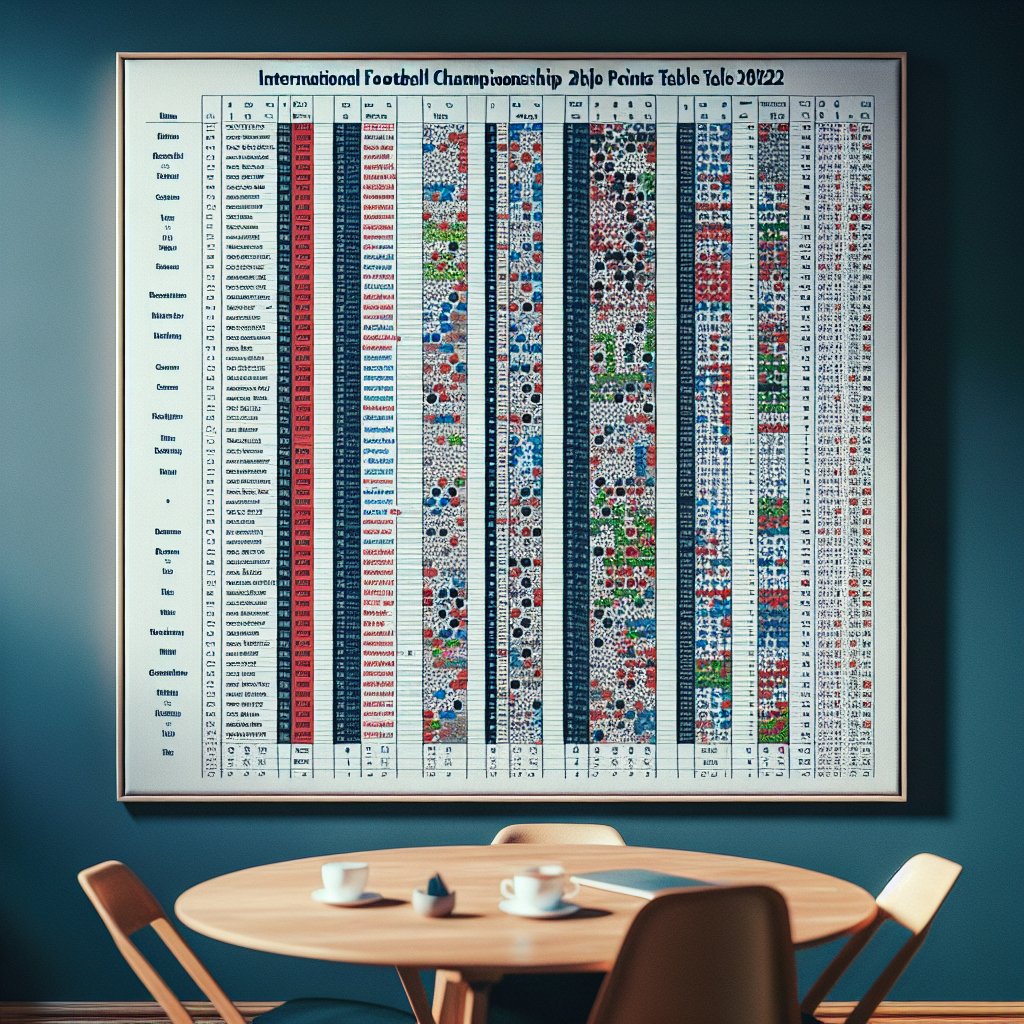
The FIFA World Cup is one of the most anticipated sporting events globally, bringing together nations to compete for the ultimate prize in football. The 2022 World Cup, held in Qatar, was no exception, capturing the attention of millions of fans worldwide. A critical component of the tournament is the points table, which determines the progression of teams from the group stages to the knockout rounds. This article delves into the intricacies of the World Cup points table, providing insights into its structure, significance, and impact on the tournament's outcome.
The Structure of the World Cup Points Table
The World Cup points table is a systematic way to rank teams based on their performance in the group stage matches. Each group consists of four teams, and the points table is used to determine which two teams advance to the knockout stage. The table is structured as follows:
- Matches Played (MP): The total number of matches a team has played.
- Wins (W): The number of matches a team has won.
- Draws (D): The number of matches that ended in a draw.
- Losses (L): The number of matches a team has lost.
- Goals For (GF): The total number of goals scored by a team.
- Goals Against (GA): The total number of goals conceded by a team.
- Goal Difference (GD): The difference between goals scored and goals conceded (GF - GA).
- Points (Pts): The total points accumulated by a team, with three points awarded for a win, one point for a draw, and none for a loss.
Significance of the Points Table
The points table is crucial in determining the fate of teams in the World Cup. It serves several purposes:
- Ranking Teams: The primary function of the points table is to rank teams within each group. The top two teams from each group advance to the knockout stage.
- Tiebreakers: In cases where teams have equal points, the goal difference and goals scored are used as tiebreakers to determine rankings.
- Strategic Planning: Teams use the points table to strategize their approach in upcoming matches, knowing what results they need to advance.
Case Study: Group Stage Dynamics in the 2022 World Cup
The 2022 World Cup featured several intriguing group stage scenarios that highlighted the importance of the points table. One notable example was Group E, which included Spain, Germany, Japan, and Costa Rica. This group was dubbed the "Group of Death" due to the presence of two former World Cup champions, Spain and Germany.
As the group stage unfolded, Japan emerged as a surprise contender, defeating both Germany and Spain. The final standings were determined by a combination of points, goal difference, and goals scored. Japan topped the group, followed by Spain, while Germany, despite a strong performance in their final match, was eliminated due to an inferior goal difference compared to Spain.
Statistics and Trends from the 2022 World Cup Points Table
The 2022 World Cup points table revealed several interesting statistics and trends:
- High-Scoring Matches: The tournament saw an increase in high-scoring matches, with several teams adopting an aggressive playing style.
- Close Contests: Many groups were tightly contested, with the final standings often decided on the last matchday.
- Emergence of Underdogs: Teams like Japan and Morocco defied expectations, advancing to the knockout stages and showcasing the unpredictable nature of the World Cup.
Impact of the Points Table on Team Strategies
The points table significantly influences team strategies during the group stage. Coaches and players closely monitor their standings and adjust their tactics accordingly. For instance:
- Defensive Approach: Teams leading their group may adopt a more defensive approach in their final matches to secure their position.
- All-Out Attack: Teams needing a win to advance may opt for an aggressive, attacking strategy to maximize their goal-scoring opportunities.
- Balancing Act: Teams on the cusp of qualification must balance between attacking to win and defending to avoid conceding goals that could affect their goal difference.
Conclusion: The Crucial Role of the Points Table in the World Cup
The World Cup points table is an essential component of the tournament, providing a clear and structured way to rank teams based on their performance. It not only determines which teams advance to the knockout stages but also influences team strategies and adds an element of suspense to the group stage. The 2022 World Cup demonstrated the dynamic nature of the points table, with unexpected outcomes and thrilling matches that kept fans on the edge of their seats. As we look forward to future tournaments, the points table will continue to play a pivotal role in shaping the World Cup's narrative and excitement.

